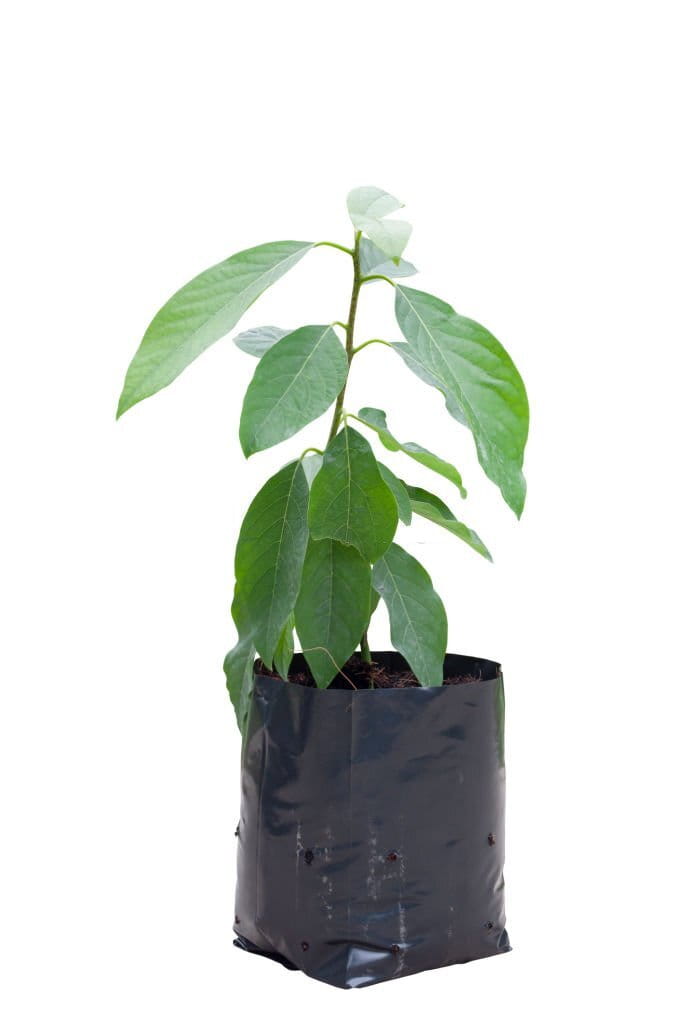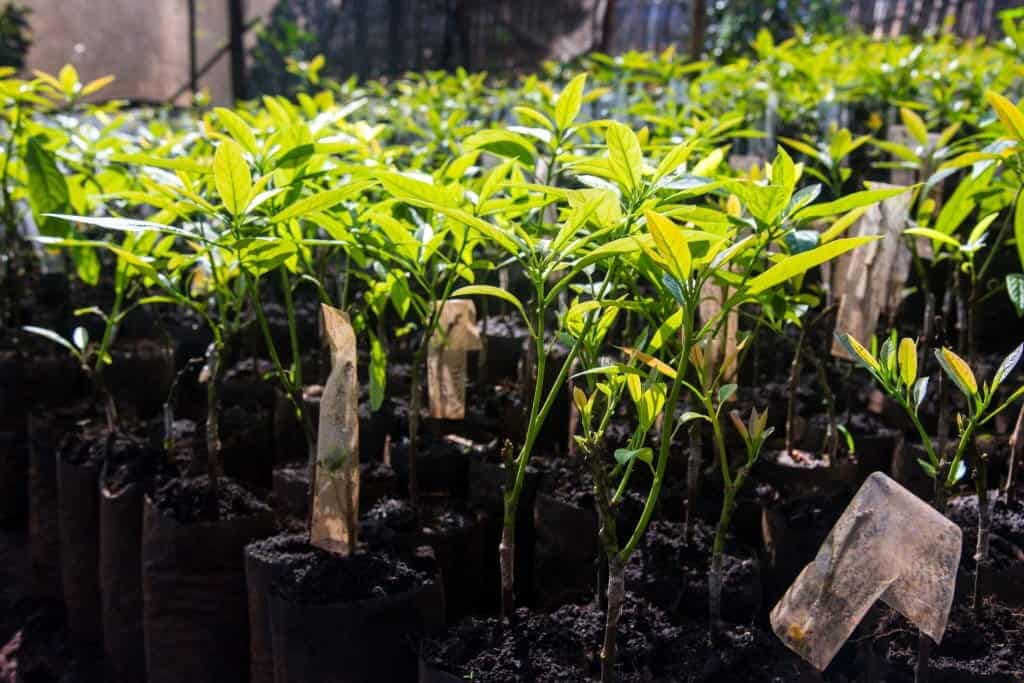How to grow avocado seed in plastic bag? Is it simple or difficult?
Avocado appears to be a plant that has been overly used in modern life. Avocado provides a variety of health benefits, including glowing skin and the removal of toxins…
Avocados may also be made into a variety of delicious and healthful recipes. Do you wish to have an avocado tree in your garden because avocados have so many benefits? Avocado seeds left over after eating can aid in the growth of a healthy avocado tree.
Avocado cultivation and growth are not difficult, and you may do it yourself at home. Planting equipment is likewise quite basic. Do you think you can successfully cultivate avocado trees in your small yard with just one plastic bag?
In this essay, we’ll show you how to germinate avocado seeds using only plastic bags. Furthermore, how should they be cared for in order for them to develop further in the future? We hope you are successful in your application and planting.

Grow avocado seed in plastic bag?
Growing the seeds ahead of time in a plastic bag avoids this problem and speeds up germination.
If you’re using preserved garden seed or aged seed from prior years, plastic bag sprouting also allows you to monitor germination rates. The time it takes for a plant to germinate varies depending on the variety, but most sprout between three to 14 days.
1. Prepare avocado seed and planting tools
Choose four avocado seeds that are undamaged and intact. You’ll probably use them after you’ve harvested the avocado meat, so take care not to slice or puncture them while extracting the seeds.
In a bowl of warm water, thoroughly clean the seeds. Allow seeds to dry once they’ve been rinsed. Clean seeds should be placed on a sunny windowsill to cure for a few days. After curing, inspect the seeds and eliminate those that have dark spots or deep wrinkles.
2. How to grow in a plastic bag
Two paper towels should be stacked on top of each other. Fold the towels in half and spritz them with water until they are damp but not dripping.
Spread the seeds on top of the paper towel, slightly covering half of the cloth. Make sure the seeds are not touching and that there is about 1/4-inch of space between them.
Fold the damp towel in half and sandwich the seeds in the middle. Press lightly on top of the towel to ensure that the seeds are in full contact with both sides.
Place the paper towel in a zip-top plastic bag. To keep the towel from drying out, shut the bag and keep the liquid within.
Place the sealed bag somewhere warm, like on top of the refrigerator, where the temperature is between 70 and 80 degrees.
3. Check the avocado seed carefully
To keep the avocado seeds moist, keep an eye on the paper towels surrounding them.
As the paper towels dry, add water as needed, but not to the point where water pools in the bag’s bottom.
Make sure the air in the bag smells fresh and not moldy by sniffing it. Replace the paper towels, rinse the seeds, and place them in a fresh bag if the fragrance becomes too strong.
Once a week should be plenty to inspect the bag. You’ll notice roots growing from the paper towels after four to six weeks.
Allow two to three weeks for the roots to grow in the humid atmosphere of the bag. Keep the paper towels in the bag and continue watering as usual throughout this period.
4. Avocado Seeds to Plant
Once the roots have sprouted and had a couple of weeks to grow, pot your avocado seeds. Fill the pot with potting soil to within an inch of the rim and bury the seeds root side down.
Distribute the seeds evenly across the pot. Make sure the seeds are well watered and firmly planted. Place the pot in a south or west-facing window in a warm, bright location.
Some notes when you grow avocados
Avocado trees should be planted in a bright, well-lit area and require regular irrigation to thrive. When the avocado leaves become pale yellow, the avocado tree is already waterlogged, therefore ceases watering for 2-4 days and then resumes normal watering.
You should also catch aphids on avocado trees on a regular basis by mixing a little neem oil, a natural insecticide, with water and spraying it evenly on the tree.
Avocados planted in pots do not have the same quality as avocados grown in rich soil. However, eating an avocado that you’ve produced yourself is still more enjoyable.
Cut off the tops of avocado trees when they reach 12 inches in height to help them have a wider canopy.
Tips for Healthy Avocado Trees
Your avocado plant will not survive if you plant it using traditional methods. Please take note of the following issues in order to help the plant get stronger and more developed.

1. Manures and Fertilizers
When planting avocado plants, avoid using manures. High levels of salt and ammonia in the soil can cause root and tip burn on the leaves.
Avocado trees should not be fertilized in their first year, according to some experts. Use a balanced citrus tree fertilizer and follow the manufacturer’s directions after that.
2. Watering
Deeply water the tree on a regular basis, but allow it to dry out slightly between waterings. Mulch trees with 3 to 4 inches of coarse wood chips to conserve moisture. Always leave at least a foot of space between the mulch and the tree trunk.
3. Pruning
Avocado trees dislike being cut excessively, especially when they are fruiting. Dead branches, on the other hand, can be removed at any time.
4. Harvesting
Avocados must be harvested manually. The fruit will not fall off the tree and will never ripen if you do not pick it. Your Avocado Trees, on the other hand, can be used as a sort of storage facility for your tasty fruit for up to eight months. The richer the flavor, the longer the fruit stays on the tree — just don’t leave it there for too long.
Frequently Asked Questions
Q: When should I plant my avocado tree?
Avocado trees prefer warm soil. They should be planted in the ground between March and June. If they come in during the summer, there is always the potential for sun damage because young trees have a hard time absorbing water.
Q: What is the best way to ripen an avocado?
To hasten the ripening of an avocado, place it in a paper bag alongside a banana or an apple for 2-3 days. Fruits produce gasses that aid in the ripening process. Avocados do not mature on trees and become softer after being plucked.
Read more: What Happens If You Eat A Rotten Avocado?
Q: When an avocado tree bears fruit, how long does it take?
Your avocado type and growing conditions will determine how long it takes to bear fruit, although our kinds normally bear fruit in 3 to 5 years.
Q: Is it true that avocado trees require a lot of sunlight?
Avocado trees grow best in full sun. They’ll require around 4-6 hours of direct sunlight every day to thrive, so make sure you put them in a sunny area!
Q: Will an avocado seed that has been sprouted bear fruit?
It might be difficult to correctly harvest avocado fruit. Avocado trees are grown from pits or purchased as grafted named kinds from nurseries. Fruit can be produced by trees that were grown from seeds. Grafted trees yield fruit more quickly and of higher quality than seed-grown varieties.
Q: Is it better to plant avocado seeds with the sprout facing up or down?
If your seed sprouted in water, drill a hole in the soil large enough to hold the complete root system and backfill to just below the lowest leaves. Turn the little container over and gently tap it to release both the sprout and the dirt if you’re transplanting a sprout from a pot.
Q: What’s the deal with my avocado seed not sprouting?
Keeping the pit too chilly: Your avocado will struggle to grow if the temperature is too cold. It might still sprout, but it’ll take a long time. The optimal temperature is around 77 degrees Fahrenheit. Keep your small plastic baggie near your water heater or furnace to keep it warm all the time.
Final thoughts
Isn’t it simple to grow avocado seed in plastic bag? To cultivate your own avocado tree in the garden, follow our guidelines. I hope you found the information in this post useful.